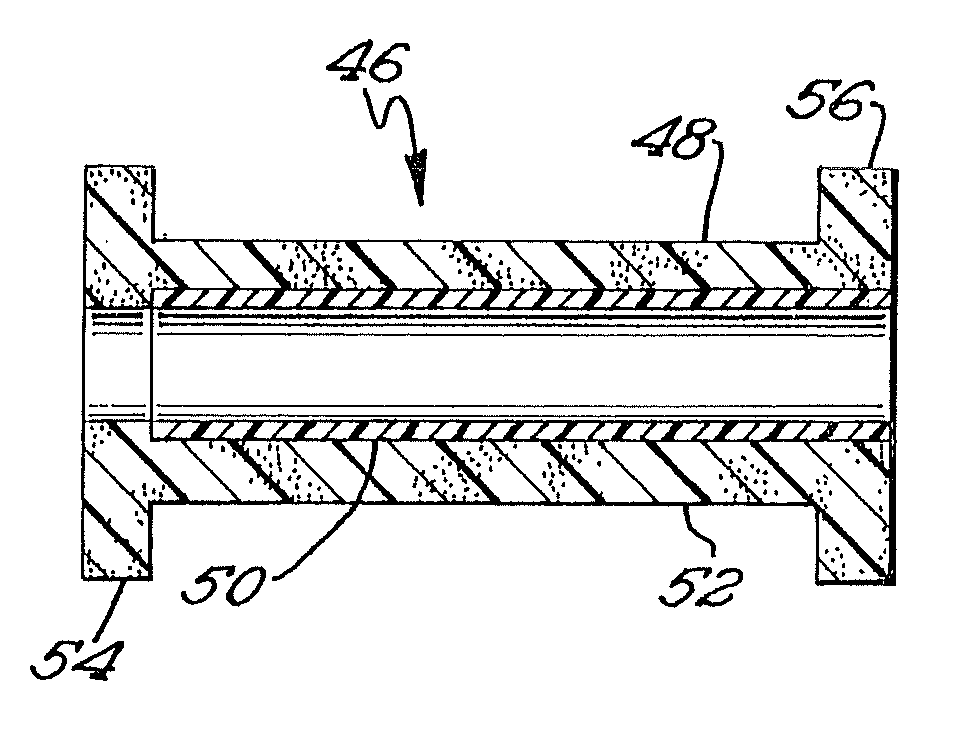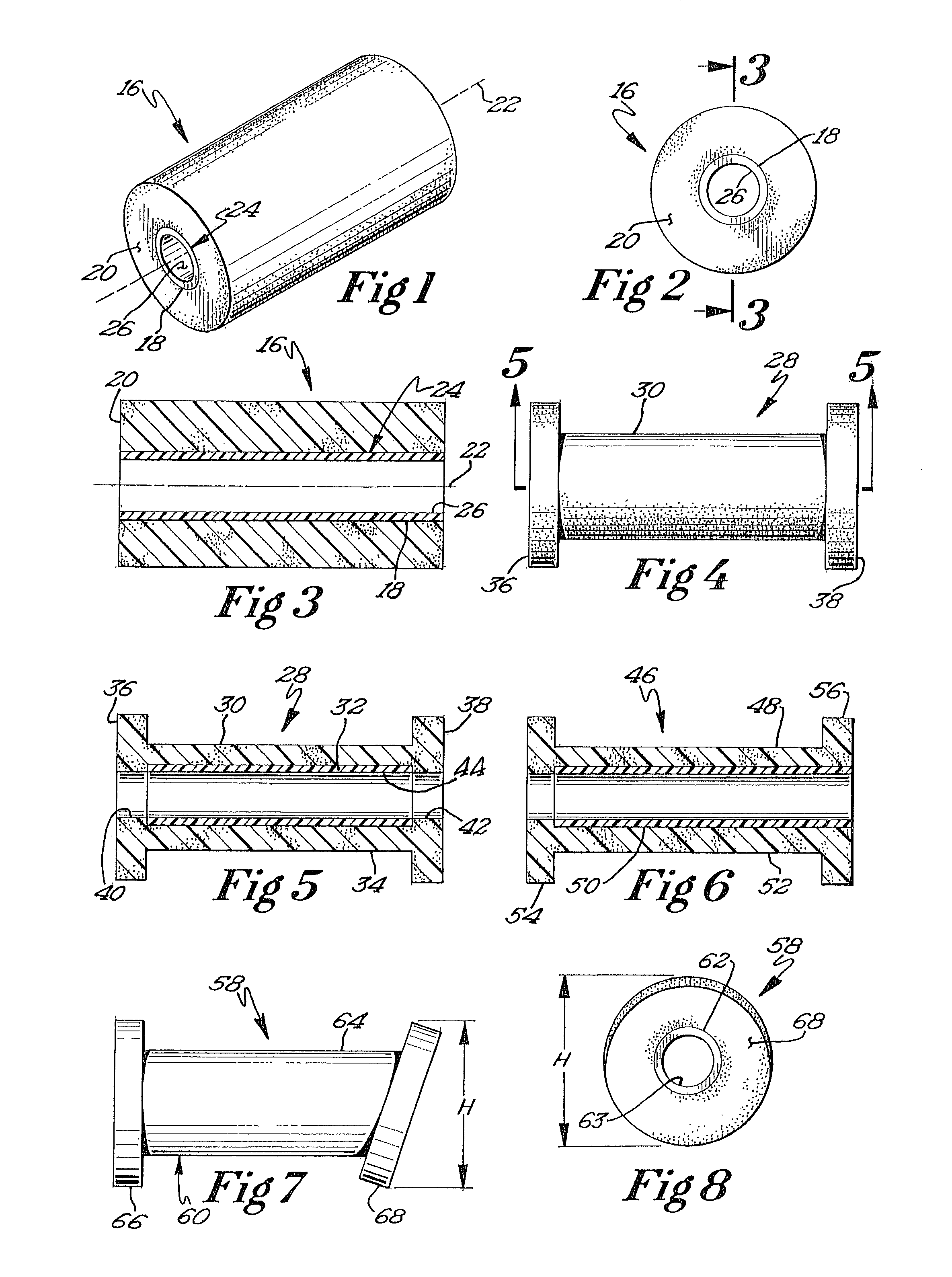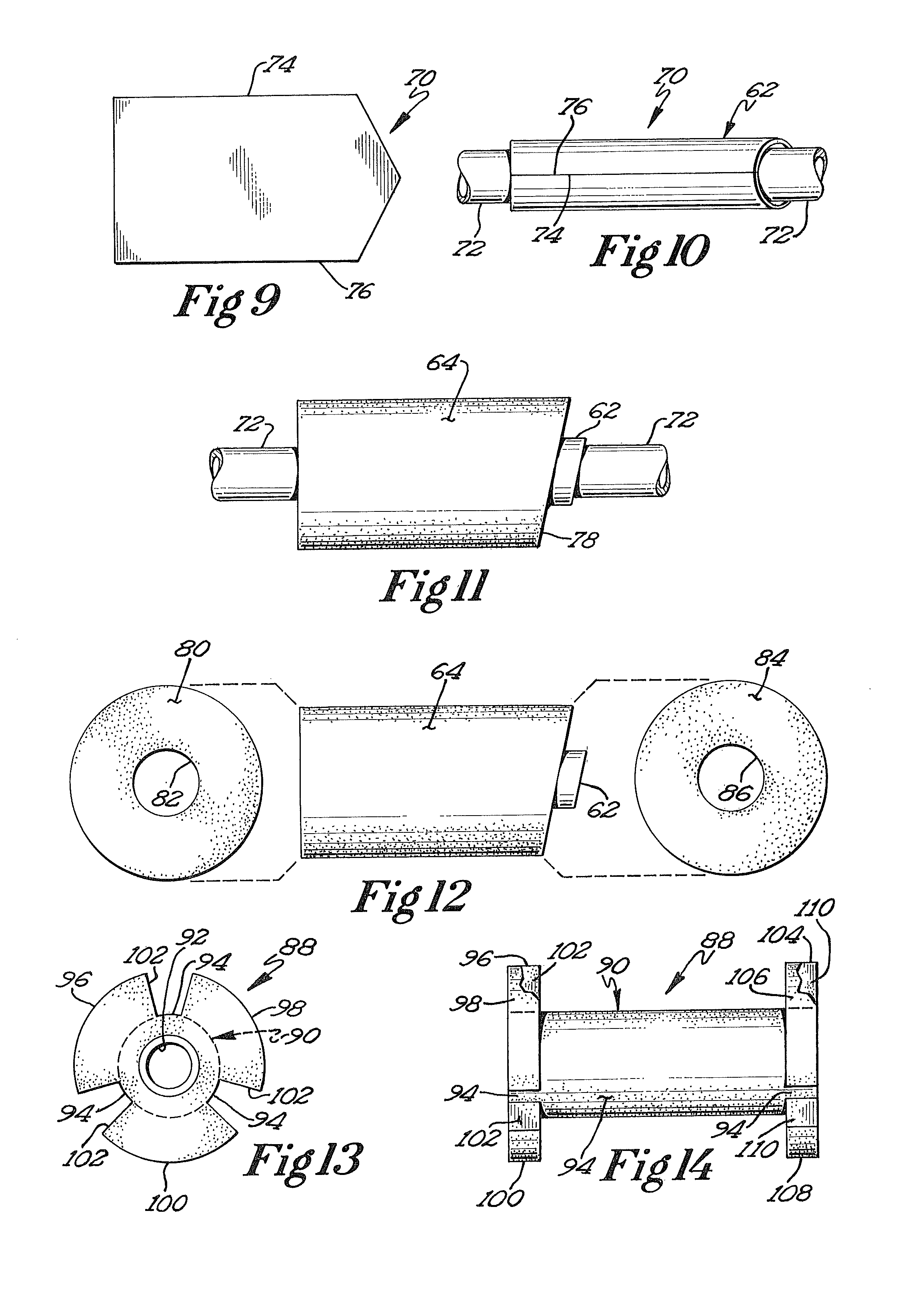Biodegradable prosthesis
a prosthesis and biodegradable technology, applied in the field of body insertable prosthetic devices, can solve the problems of affecting speech and language development, affecting the tympanic membrane and other middle ear structures, and affecting the hearing of patients, so as to reduce the prosthesis profile quickly, efficiently conduct fluids, and preserve the size of the lumen.
- Summary
- Abstract
- Description
- Claims
- Application Information
AI Technical Summary
Benefits of technology
Problems solved by technology
Method used
Image
Examples
example 1
[0085]A malleable paste is formed by combining gelatin powder and an antibiotic and steroid liquid otic preparation (eardrop). A preferred eardrop, available under the brand name CIPRODEX, incorporates ciprofloxacin hydrochloride as the antibacterial agent and dexamethasone as an anti-inflammatory corticosteroid, in purified water. Sodium hydroxide or hydrochloric acid may be added to adjust the pH.
[0086]Approximately 5 ml of the eardrop is added gradually in approximately 0.05 ml drops to 1 gram of GELFOAM absorbable gelatin powder. The mixture is kneaded as the eardrop is added, to provide a paste of the desired consistency and uniformity. The paste is shaped around a pin having a diameter corresponding to the desired lumen diameter, formed approximately into the desired tubular shape, and allowed to dry. The dried body is carved into the desired tubular shape, and the pin is removed to provide the lumen.
example 2
[0087]The process is essentially similar to that of Example 1, except that 3-4 ml of a sterile saline solution are added to the powdered gelatin sponge in lieu of the eardrop.
example 3
[0088]A prosthesis structure is formed in essentially the same manner as Example 1, with the exception that a larger pin is employed to foam a lumen with a larger diameter. After the body has solidified, a sheet of GELFILM gelatin film (thickness of 0.075 mm) is moistened, then cut to a rectangular shape and size corresponding to the desired lumen diameter. The moistened rectangular piece is bent or rolled into a tubular shape and inserted lengthwise into the lumen of the previously formed body. The gelatin film retains the tubular shape as it sets.
[0089]In the preceding examples, cut fragments of the gelatin sponge can be used in lieu of the gelatin sponge powder, and molds can be used to reduce or eliminate the need to carve or shave material from the hardened body.
[0090]Prosthesis 112, homogenous rather than layered, nonetheless combines the following favorable qualities: (1) structural integrity that facilitates use of a gripping instrument to convey the prosthesis to the intend...
PUM
| Property | Measurement | Unit |
|---|---|---|
| internal diameter | aaaaa | aaaaa |
| angle | aaaaa | aaaaa |
| thickness | aaaaa | aaaaa |
Abstract
Description
Claims
Application Information
 Login to View More
Login to View More - R&D
- Intellectual Property
- Life Sciences
- Materials
- Tech Scout
- Unparalleled Data Quality
- Higher Quality Content
- 60% Fewer Hallucinations
Browse by: Latest US Patents, China's latest patents, Technical Efficacy Thesaurus, Application Domain, Technology Topic, Popular Technical Reports.
© 2025 PatSnap. All rights reserved.Legal|Privacy policy|Modern Slavery Act Transparency Statement|Sitemap|About US| Contact US: help@patsnap.com



